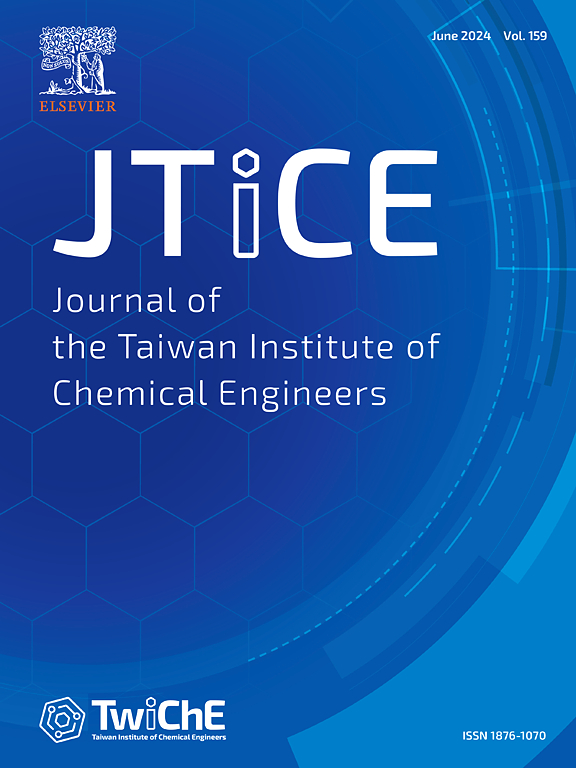Exploring microbial community dynamics in aqueous ammonia pretreated sugar beet pulp for enhanced cellulose degradation
IF 5.5
3区 工程技术
Q1 ENGINEERING, CHEMICAL
Journal of the Taiwan Institute of Chemical Engineers
Pub Date : 2025-07-16
DOI:10.1016/j.jtice.2025.106257
引用次数: 0
Abstract
Background
Sugar beet pulp (SBP) is a promising feedstock for producing biofuels and biochemicals. However, the microbial biodegradation pathways and the impact of aqueous ammonia (AA) pretreatment on SBP remain unexplored.
Methods
This study systematically investigated the microbial degradation of SBP, focusing on the niches of cellulolytic bacteria, the impact of AA-pretreatment on cellulase activity, and microbial community functions. The study utilized microbial community analysis, enzymatic activity assays, and metabolic pathway modeling to explore the interactions between microbial communities and SBP degradation.
Significant findings
Key findings include the identification of Klebsiella as a dominant bacterium aiding stable colonization of degradation bacteria in SBP. AA-pretreatment significantly increased enzyme activity to 6.44–11.85 folds compared to unpretreated groups. Pathways of nutrient uptake by microorganisms, such as nitrogen and sulfur metabolism, were closely linked to cellulase activity. The study also revealed that cellulase activity was constrained by the availability of sulfur and nitrogen, with optimal levels enhancing microbial cellulase activity. These findings provide insights into the microbial mechanisms underlying SBP degradation and the role of AA-pretreatment in enhancing enzymatic hydrolysis.

探讨氨预处理甜菜纸浆中微生物群落动态以促进纤维素降解
甜菜浆(SBP)是一种很有前途的生物燃料和生化原料。然而,微生物降解途径和水氨(AA)预处理对收缩压的影响尚不清楚。方法本研究系统研究了SBP的微生物降解,重点研究了纤维素降解菌的生态位、aa预处理对纤维素酶活性的影响以及微生物群落功能。该研究利用微生物群落分析、酶活性测定和代谢途径建模来探索微生物群落与SBP降解之间的相互作用。主要发现包括克雷伯氏菌作为优势菌的鉴定,帮助降解菌在SBP中稳定定植。与未处理组相比,aa预处理显著提高了酶活性6.44-11.85倍。微生物的营养吸收途径,如氮和硫代谢,与纤维素酶活性密切相关。研究还表明,纤维素酶的活性受硫和氮的可用性的限制,最佳水平可以提高微生物纤维素酶的活性。这些发现为SBP降解的微生物机制和aa预处理在促进酶解中的作用提供了见解。
本文章由计算机程序翻译,如有差异,请以英文原文为准。
求助全文
约1分钟内获得全文
求助全文
来源期刊
CiteScore
9.10
自引率
14.00%
发文量
362
审稿时长
35 days
期刊介绍:
Journal of the Taiwan Institute of Chemical Engineers (formerly known as Journal of the Chinese Institute of Chemical Engineers) publishes original works, from fundamental principles to practical applications, in the broad field of chemical engineering with special focus on three aspects: Chemical and Biomolecular Science and Technology, Energy and Environmental Science and Technology, and Materials Science and Technology. Authors should choose for their manuscript an appropriate aspect section and a few related classifications when submitting to the journal online.

 求助内容:
求助内容: 应助结果提醒方式:
应助结果提醒方式:


